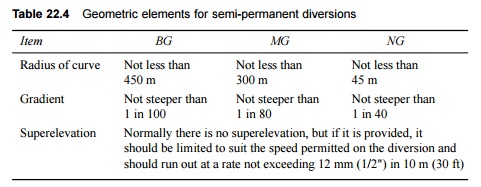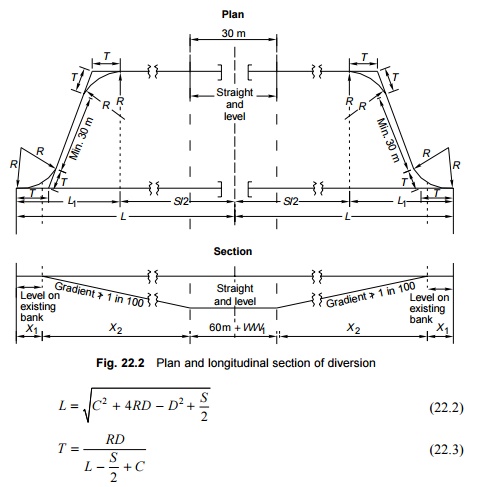Chapter: Civil : Railway Airport Harbour Engineering : Railway Engineering : Railway Accidents and Disaster Management
Restoration of Traffic
Restoration of
Traffic
After the necessary information has been collected, immediate
and prompt action should be taken to restore traffic on the line. In the case
of causeways, etc., it may be necessary to restore traffic by making temporary
arrangements such as the insertion of a rail cluster or the provision of a
temporary diversion. Arrangements should be made for adequate labour and
permanent way material and the damaged track should be attended to as soon as
possible.
It may be emphasized here that adequate labour is
the most predominant requirement for the restoration of traffic. All engineers
and inspectors should thoroughly acquaint themselves with all possible sources
from where labour can be readily obtained in the event of a breach or a serious
derailment in their section.
Diversions
Diversions are set up at those
points in a track where there is some obstruction or where some reconstruction
work is in progress. They may be classified into two main categories.
(a) Temporary
diversions constructed around an obstruction to traffic, which are not likely
to be used for more than 10 days.
(b) Semi-permanent
diversions constructed for the special purpose of facilitating
the reconstruction of lines, bridges, etc., which are likely
to be used for a period of more than 10 days.
All trains must stop before
entering a temporary diversion and proceed at highly minimized speeds. On a
semi-permanent diversion, trains may proceed at a non-stop but reduced speed
but only after an adequate period of construction.
Normally semi-permanent
diversions are provided on Indian Railways with an initial speed requirement of
zero, though this may be relaxed after the consolidation of the bank. A
semi-permanent diversion should be laid according to the specifications
presented in Table 22.4.
Table 22.4 Geometric elements for
semi-permanent diversions

In difficult terrain, it may be
necessary to lay curves of radius not less than 225 m on BG and 125 m on MG and
adopt the steepest gradient on the section.
In addition to the standards
specified in Table 22.4, it is desirable that a semi-permanent diversion have
the following features.
(a) The
existing bank should not be cut to lay the diversion.
(b) The
gradient should be suitably compensated for curvature in order to ensure that
in spite of the curvature, the gradient does not exceed the limiting value
specified in Table 22.4.
(c) If the
diversion includes a bridge with cribs, a straight and level portion of 30 m
(100 ft) should be provided on either approach to the bridge.
(d) To guard
against the possible settling of the diversion a blanket of coal ash should be
provided on the new embankment and rolled if possible.
Plan and longitudinal section of
diversion
The plan laid to ensure that the diversion settles in its
place is illustrated in Fig. 22.2. The formulae used in connection with the
same are the following:

where L is the length of
half the diversion measured along the original alignment, D is the
maximum distance of diversion from the original alignment, C is the straight
line between the two reverse curves connecting the original alignment to the
diversion, which is not less than 30 m (100 ft), S is the straight
portion of the diversion that is parallel to the original alignment, R
is the radius of the curve, and T is the length of tangent.
Related Topics